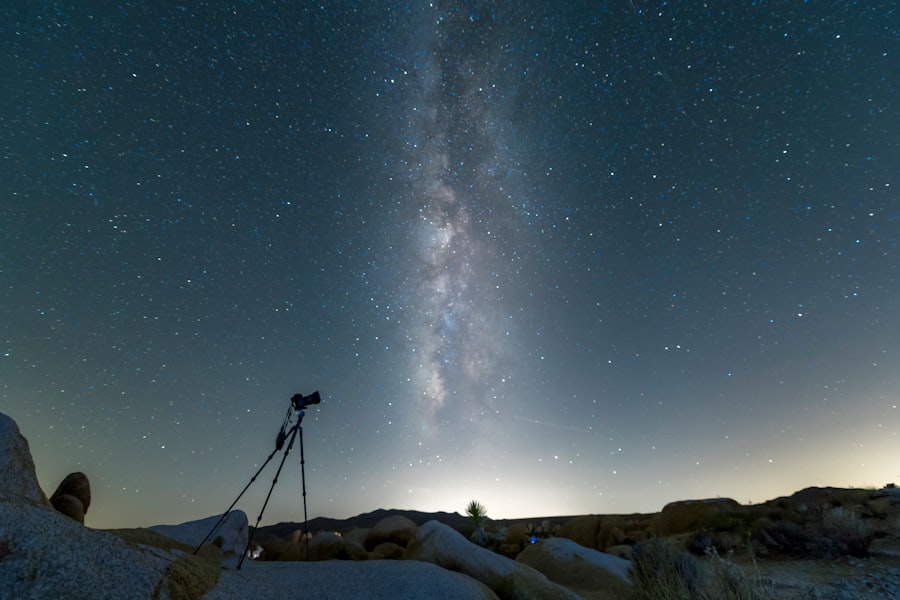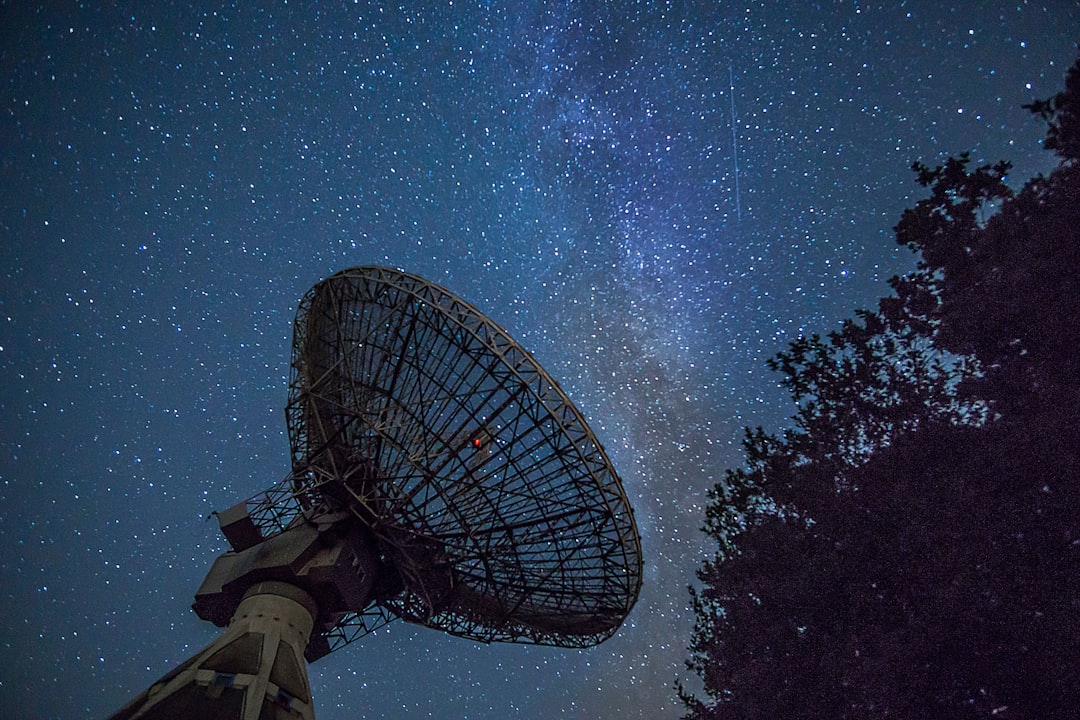The history of telescope technology is a fascinating journey that spans several centuries, beginning with the rudimentary designs of the early 17th century. The first practical telescope, attributed to Hans Lippershey in 1608, was a simple refracting instrument that utilized a convex lens to magnify distant objects. Shortly thereafter, Galileo Galilei improved upon this design, creating a telescope that could magnify objects up to 20 times.
His observations of celestial bodies, including the moons of Jupiter and the phases of Venus, revolutionized our understanding of the cosmos and laid the groundwork for modern astronomy. The refracting telescope dominated the early years of astronomical observation, with notable figures like Johannes Kepler and Isaac Newton contributing to its development. As the centuries progressed, the limitations of refracting telescopes became apparent, particularly concerning chromatic aberration, which caused color distortions in images.
This led to the advent of reflecting telescopes in the late 17th century, pioneered by Newton himself. By using mirrors instead of lenses, these telescopes could gather more light and produce clearer images without the color distortions inherent in refractors. The 19th century saw further advancements with the construction of larger and more powerful telescopes, such as the Great Refractor at the Yerkes Observatory and the 100-inch Hooker Telescope at Mount Wilson Observatory.
These monumental instruments allowed astronomers to delve deeper into the universe, revealing previously unseen celestial phenomena.
Key Takeaways
- Telescope technology has evolved significantly over the years, from simple optical telescopes to advanced space telescopes and ground-based observatories.
- Telescopes have revolutionized our understanding of the universe, allowing us to observe distant galaxies, stars, and other celestial objects, and providing valuable data for scientific research.
- Advancements in space telescopes, such as the Hubble Space Telescope and the James Webb Space Telescope, have enabled astronomers to capture high-resolution images and study the universe in unprecedented detail.
- Ground-based telescopes continue to push the boundaries of observation, with advancements in adaptive optics technology improving image quality and allowing for clearer views of distant objects.
- Adaptive optics play a crucial role in telescope technology, correcting for the distortion caused by the Earth’s atmosphere and enhancing the clarity of astronomical images.
The Impact of Telescopes on Our Understanding of the Universe
Telescopes have fundamentally transformed our comprehension of the universe, enabling astronomers to observe celestial objects that are billions of light-years away. The ability to gather and analyze light from distant stars and galaxies has led to groundbreaking discoveries that have reshaped our understanding of cosmology. For instance, Edwin Hubble’s observations in the 1920s using the Hooker Telescope revealed that the universe is expanding, leading to the formulation of Hubble’s Law.
This discovery not only provided evidence for the Big Bang theory but also prompted a reevaluation of the static universe model that had dominated scientific thought for centuries. Moreover, telescopes have played a crucial role in identifying and classifying various celestial bodies. The discovery of Uranus by William Herschel in 1781 and Neptune by Johann Galle in 1846 were both made possible through telescopic observations.
These findings expanded our knowledge of the solar system and challenged existing paradigms about planetary formation and dynamics. Telescopes have also been instrumental in detecting exoplanets, with missions like Kepler revealing thousands of potential worlds beyond our solar system. Each new discovery has added layers to our understanding of planetary systems and the potential for life beyond Earth.
Advancements in Space Telescopes

The launch of space telescopes marked a significant milestone in astronomical observation, as these instruments are free from Earth’s atmospheric interference, which can distort and absorb light from celestial objects. The Hubble Space Telescope, launched in 1990, is perhaps the most famous example of this technological leap. Equipped with advanced imaging capabilities and a suite of scientific instruments, Hubble has provided stunning images and invaluable data that have deepened our understanding of the universe.
Its observations have led to significant discoveries, such as the acceleration of the universe’s expansion and insights into the formation of galaxies. Following Hubble’s success, several other space telescopes have been developed to explore different wavelengths of light. The Chandra X-ray Observatory, launched in 1999, focuses on X-ray emissions from high-energy regions of space, such as black holes and supernova remnants.
Meanwhile, the Spitzer Space Telescope has provided critical data in the infrared spectrum, allowing astronomers to study cooler objects like dust clouds and distant galaxies obscured by cosmic dust. The upcoming James Webb Space Telescope promises to push these boundaries even further by observing the universe in unprecedented detail across infrared wavelengths, potentially revealing information about the early universe and the formation of stars and planets.
Ground-Based Telescopes: Pushing the Boundaries of Observation
| Telescope Name | Location | Aperture Size (m) | First Light |
|---|---|---|---|
| Keck Observatory | Mauna Kea, Hawaii | 10 | 1993 |
| Very Large Telescope (VLT) | Cerro Paranal, Chile | 8.2 | 1998 |
| Gemini Observatory | Mauna Kea, Hawaii and Cerro Pachón, Chile | 8.1 | 1999 |
Despite the advantages offered by space telescopes, ground-based telescopes continue to play a vital role in astronomical research. Advances in technology have allowed these instruments to achieve remarkable levels of sensitivity and resolution. The Keck Observatory in Hawaii, for example, features two telescopes equipped with adaptive optics systems that can correct for atmospheric distortion in real-time.
This capability enables astronomers to obtain images that rival those from space-based observatories while remaining on Earth. Furthermore, large ground-based observatories are often equipped with multi-wavelength capabilities, allowing them to observe celestial phenomena across different parts of the electromagnetic spectrum. The Very Large Telescope (VLT) in Chile is an exemplary facility that combines four individual telescopes to create a powerful observational tool capable of high-resolution imaging and spectroscopy.
This versatility enables astronomers to study everything from nearby asteroids to distant galaxies with unprecedented detail. Ground-based telescopes also benefit from collaborative efforts among international observatories, pooling resources and data to enhance our collective understanding of cosmic events.
The Role of Adaptive Optics in Telescope Technology
Adaptive optics has emerged as a transformative technology in modern astronomy, significantly enhancing the capabilities of ground-based telescopes. This technique involves using deformable mirrors that can adjust their shape in real-time to counteract atmospheric turbulence. As light from celestial objects passes through Earth’s atmosphere, it is distorted by varying air densities and temperatures, leading to blurred images.
Adaptive optics systems measure these distortions using wavefront sensors and apply corrective adjustments to the telescope’s mirrors. The implementation of adaptive optics has allowed astronomers to achieve near-diffraction-limited imaging from ground-based observatories. For instance, the Keck Observatory’s adaptive optics system has enabled researchers to study exoplanets directly by blocking out starlight and capturing faint signals from orbiting planets.
This capability has opened new avenues for understanding planetary atmospheres and potential habitability. Additionally, adaptive optics has facilitated detailed studies of stellar surfaces and dynamics within our galaxy, providing insights into stellar evolution and interactions.
Telescopes and the Search for Exoplanets

The quest for exoplanets—planets orbiting stars outside our solar system—has become one of the most exciting frontiers in modern astronomy. Telescopes have been instrumental in this search, employing various techniques to detect these distant worlds. The transit method, which involves monitoring a star’s brightness for periodic dips caused by a planet passing in front of it, has been particularly successful.
The Kepler Space Telescope utilized this method to discover thousands of exoplanet candidates during its mission. Ground-based telescopes have also contributed significantly to exoplanet research through radial velocity measurements. By observing shifts in a star’s spectral lines due to gravitational interactions with orbiting planets, astronomers can infer the presence and characteristics of these exoplanets.
Instruments like HARPS (High Accuracy Radial velocity Planet Searcher) at La Silla Observatory have achieved remarkable precision in measuring these shifts, leading to discoveries of Earth-sized planets within habitable zones around their stars. As technology continues to advance, future telescopes are expected to enhance our ability to characterize exoplanet atmospheres and assess their potential for supporting life.
Telescope Technology and the Study of Dark Matter and Dark Energy
The study of dark matter and dark energy represents one of the most profound challenges in contemporary astrophysics, and telescopes play a crucial role in unraveling these mysteries. Dark matter is believed to constitute approximately 27% of the universe’s mass-energy content but remains undetectable through conventional means. However, its presence can be inferred through gravitational effects on visible matter.
Telescopes equipped with advanced imaging techniques can observe galaxy clusters and their gravitational lensing effects—where light from distant galaxies is bent around massive objects—providing insights into dark matter distribution. Similarly, dark energy, which accounts for about 68% of the universe’s energy density and is responsible for its accelerated expansion, poses significant questions for astronomers.
Ongoing surveys such as the Dark Energy Survey (DES) utilize ground-based telescopes to map large areas of the sky and gather data on galaxy distributions over time. These efforts aim to refine our understanding of dark energy’s nature and its implications for cosmic evolution.
The Future of Telescope Technology: What’s on the Horizon?
The future of telescope technology promises exciting advancements that will further enhance our ability to explore the cosmos. One significant development on the horizon is the construction of next-generation ground-based observatories equipped with extremely large telescopes (ELTs). Projects like the Extremely Large Telescope (ELT) in Chile aim to provide unprecedented resolution and sensitivity through mirrors measuring over 39 meters in diameter.
These instruments will enable astronomers to study faint objects with remarkable detail and investigate fundamental questions about galaxy formation and evolution. In addition to ELTs, upcoming space missions such as NASA’s James Webb Space Telescope are set to revolutionize our understanding of the universe by observing infrared wavelengths with unparalleled precision. Webb’s capabilities will allow scientists to study early galaxies formed shortly after the Big Bang and analyze exoplanet atmospheres for potential biosignatures.
Furthermore, advancements in artificial intelligence and machine learning are expected to play a crucial role in data analysis from these telescopes, enabling astronomers to sift through vast amounts of information more efficiently than ever before. As we look ahead, collaborations between international space agencies and research institutions will likely drive innovation in telescope technology. Initiatives like the European Space Agency’s Euclid mission aim to investigate dark energy through precise measurements of galaxy shapes and distributions over time.
Such collaborative efforts will not only enhance our observational capabilities but also foster a global scientific community dedicated to unraveling the mysteries of our universe.
For those interested in the technological advancements that complement the field of astronomy, a related article worth exploring is “Harnessing Technology Resources: A Comprehensive Guide.” This piece delves into the various technological tools and resources that can be utilized across different fields, including astronomy, to enhance research and discovery. The integration of technology in telescope design and functionality is a prime example of how these resources can be harnessed to push the boundaries of our understanding of the universe. You can read more about it by visiting the article here.





















+ There are no comments
Add yours